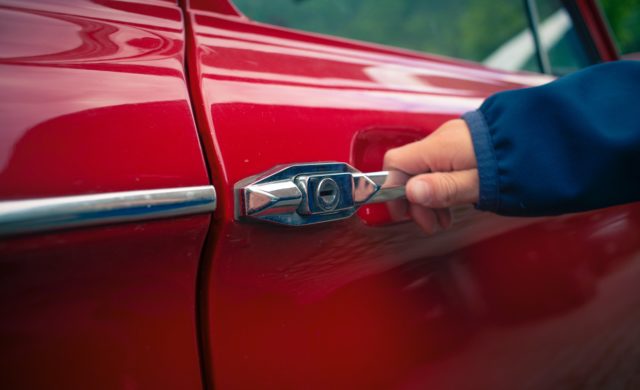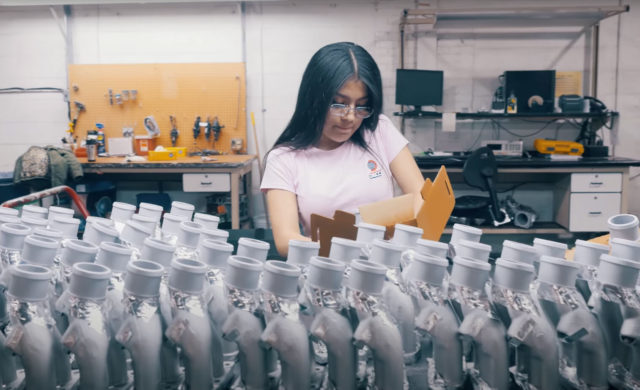When a manufacturing design engineer is developing a component, they are designing it to perform as intended in the field. Failure is not planned for because if there was a perceived threat of such during the design stage, it would be compensated for.
However, “failure” can constitute more than just a component malfunctioning or not performing in the field as intended…especially when a functional coating process is required.
For instance, would a part that requires 100% sorting after a coating operation – when that cost was not factored into the process – due to inadequate structural design be deemed a “failure” as well? We think it would (read our white paper regarding this specific topic).
Manufacturing design engineers should be sure to consider some of the following when in development of a component that will require a post coating application process:
- Material Type: different coatings cure at different temperatures and some at levels that could degrade the metallurgical makeup of the base material. For instance, if a component is made out of aluminum in an effort to save weight, but requires a non-stick coating – some non-stick coatings cure at over 700°F and could soften the aluminum if not handled properly. What the function of the coating is, and its cure temperature, should always be considered when deciding on a base material.
- Unnecessarily tight tolerances: the general school of thought is the tighter the tolerances, the better the opportunity the part has to function optimally. But sometimes components are engineered with unnecessarily tight tolerances…tolerances where, when opened up, the part would still function perfectly fine. Given the fact that a functional coating process cannot be centered (whether it is dip-spin or rack-spray), unnecessarily tight tolerances can result in added inspection, rework or scrap costs that are more than avoidable.
- Mating Components/Assembly: components that must pass formidable salt-spray requirements (north of 1000hrs) will usually require a zinc-flake, corrosion resistant coating. For these coatings to achieve their elevated corrosion resistant capabilities, there must be consistent coverage. If a part is designed necessitating the welding or bolting of another component prior to coating, a dip-spin application is usually explored to achieve complete coverage in the recessed spaces where the two parts meet. However, as these types of parts can sometimes be less rigid structurally, a dip-spin coating process could end up distorting or bending the component, requiring a 100% post-coating sort. Moving to a rack-spray process could solve the sorting problem, but may pose issues with incomplete coverage (due to the Faraday Cage effect) or even higher coating costs if multiple coats are necessary to ensure complete coverage. In either case, those types of additional costs are typically not accounted for up front.
- Post Coating Assembly: if a part must be bent, crimped or formed in any way after the coating process, some notable things about coating types:
- A two-layer zinc flake coating does not flex on rigid materials – it will fracture every time. A zinc-plating with an organic, aluminum rich top coat is more flexible, but will also not guarantee the corrosion resistance some OEMs require (such as 1500hrs in salt-spray).
- Fluoropolymer coatings are very flexible but offer extended corrosion resistance only when applied in thicknesses above 25 microns, and usually only when applied over plating. They are also far more expensive than zinc-flake coatings so they may be cost prohibitive for a small stamping or bracket.
- Moly-disulfide/graphite coatings are also relatively flexible but offer limited corrosion protection (at most 720hrs in salt-spray if applied over a plated surface).
- If corrosion protection is not an issue and only lubrication is desired, a fluoropolymer or moly-disulfide coating will work fine. However, long term performance is questionable in regards to corrosion protection, regardless of coating type, on a rigid component that must be bent more than a few millimeters.
At DECC, we often come across instances where a part was not designed with the coating application in mind and we are left trying to fix a process/component problem that was doomed from the get-go.
When designing a part that requires a functional coating, be sure to keep the above considerations in mind to ensure successful processing and part performance. And if you have any questions, be sure to contact us…we will be a resource for your coating concerns and offer input, even if it means sending you down an avenue that doesn’t involve DECC.
Related Articles

Reduce Plastic Sticking with Dryer Panel Coatings
DECC SOLVES PROBLEM OF PLASTIC STICKING TO DRYER PANELS

Coatings for a Quiet Ride
As cars have gotten quieter and quieter over the years, auto makers have...

Dip Spin vs. Rack Spray – Why Not Both?
When it comes to the application of liquid-based functional coatings, there are two...

